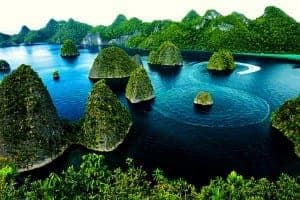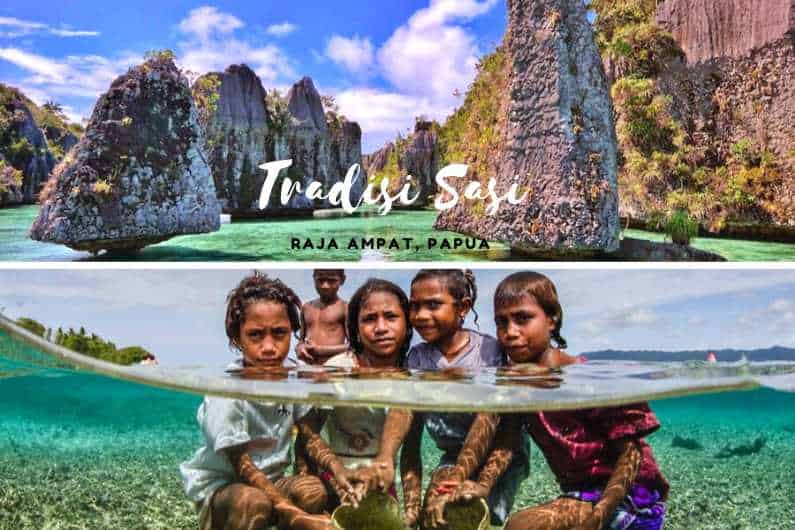Of course, each region has its own customs and stories, one of which is the Sasi Raja Ampat Tradition. This tradition is the original tradition of the Misool people, Raja Ampat.
The purpose of this tradition is to ask permission from the Creator before they take agricultural and marine products. Unique, let's discuss further.

What is the Sasi Tradition in Raja Ampat?
Sasi can be interpreted as a prohibition on taking products from natural resources as an effort to preserve the quality so that the population of biological resources remains abundant.
Because the regulations on the implementation of this prohibition also concern the regulation of the relationship between humans and nature. In addition, it also regulates humans in areas where the prohibition applies. In essence, the sasi tradition is also an effort to maintain human manners in social life.
Likewise, efforts to equalize the distribution and income of natural resources in the vicinity to all local residents. Sasi currently tends to be customary law.
The Sasi tradition is used as a reference for policy making on data collection of agricultural and marine products. But traditionally this applies in society which is a form of traditional ethics.
Misool Society's Sasi Traditions

This Sasi tradition is divided into two parts, there are land sasi and sea sasi. This time the sasi tradition that we will discuss is the sea sasi tradition that has been passed down from generation to generation in the Raja Ampat community in Papua. It has even received support from the local government.
Well, sea sasi is a tradition carried out by local people in Raja Ampat. This tradition is a sign of starting and finishing the harvest of seafood. Not only that, this tradition is also useful for obtaining abundant results during the harvest period. The trick is to close the area for a certain period of time.
Residents in Raja Ampat believe that if people go to sea, of course their success in harvesting depends on the tradition of sea sasi. The word 'sea sasi' itself means oath. Of course, this sasi tradition is a way for local communities to obtain permits to harvest produce in the areas they protect.
Because for them, this tradition is a sacred tradition, so everyone must obey it in order to maintain the sanctity of this tradition.
Sasi Laut is a hereditary tradition and is carried out by local residents in Raja Ampat. You need to know that 85 percent of the Raja Ampat area is ocean. So that their lives depend a lot on marine products.
Well, the philosophy of this tradition is to respect to ask permission first from the Creator when taking His creation.
Benefits of Sasi Laut for the Conservation of the Raja Ampat Marine Environment
Of course, this traditional procedure will provide significant benefits for the sustainability of the marine life in Raja Ampat, Papua. This is because usually the determination of the area from the marine sasi tradition is an area that is a habitat for marine animals of high economic value. One of these animals is a lobster.
Even though the results are abundant, people do not take it greedily. For example, by determining the size of lobsters that are allowed to be caught and not just catching lobsters that lay eggs.
Of course, this is intended so that lobster seeds can still exist in nature and remain sustainable. It can even be harvested in the following seasons.
When you do this, surely the number of lobsters in Raja Ampat will continue to be abundant. Well, the sale of the results of the sasi tradition can also be enjoyed by the people of Raja Ampat directly. The costs collected are also not small. Usually the results they collect are used for activities communal, one of which is the construction of public facilities.
See also:
That's the explanation of the Sasi Raja Ampat Tradition by the Misool people in Papua. Wherever we are, of course, we are also obliged to preserve our natural environment. May be useful.



